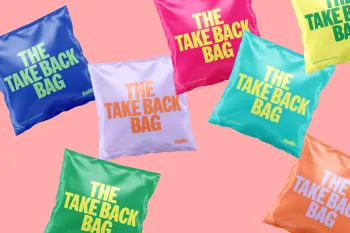Illegal mining in the Congo Basin is driving deforestation in a wildlife preserve that is one of Earth's most biodiverse places.
What's happening?
Gold mining in the Democratic Republic of Congo's Okapi Wildlife Reserve is threatening part of the world's second-largest rainforest, and people as well as wildlife are at great risk, Mongabay reported in November. Mercury poisoning is one of the major threats.
The reserve is home to the endangered African forest elephant and okapi — or African unicorn — as well as the highest number of primate species in Africa. "It's also critically important to Indigenous Mbuti and Efe forest peoples, who hunt and gather forest products within certain zones," the outlet stated.
In 2022, Global Forest Watch documented a record 1,920 hectares of lost forest in the OWR. In 2023, 1,890 hectares were wiped out, and "clearing continue[d] apace" in 2024, per Mongabay. Artisanal and commercial miners, including China's Kimia Mining, are largely responsible for the deforestation, which is most prevalent along the Ituri River and National Route 4, between Mambasa and Nia-Nia.
The problem has grown over the last decade, and violent conflict has marred the region since at least 1997, according to Mongabay. The Congolese Mining Cadastre disputes the reserve's borders as well — which has enabled Kimia to expand its operations over eight years — designating much of the territory explorable and minable.
Why is this important?
"The trees have all been cut, and of course the river has been polluted quite heavily because of the chemicals they use during the mining process. It's a real mess," John Lukas, president of the Okapi Wildlife Project, told Mongabay in 2023.
Watch now: What will it take to mainstream sustainability?
The reserve now hosts at least 18 mining sites, and 90% of them and mines near the OWR use mercury to process the gold. The practice takes place near homes and rivers and is carried out by adults and children, often without protective equipment, according to Mongabay.
Mercury can cause neuromuscular problems, emotional changes, loss of peripheral vision, and death. It bioaccumulates in the food chain, meaning apex predators are most at risk.
A former Kimia cook told the Associated Press the land has become infertile and imperiled their livelihood, pushing school and health care expenses out of reach.
What's being done to protect the Okapi Wildlife Reserve?
The Okapi Wildlife Project has worked in the reserve for over 30 years, helping Indigenous and other communities avoid the destructive mining and deforestation activities via agroforestry, education, and income generation programs, Mongabay reported.
"There is a positive side in that we've kept a lot of forest intact," Lukas said in 2023. "And there are communities that are very protective of the forest. And they just really think it's the way it should be."
In August, the Congolese government issued an internal memo that stated commercial miners would be banned from the reserve, according to the AP, though "it was unclear when that would happen or how."
Join our free newsletter for good news and useful tips, and don't miss this cool list of easy ways to help yourself while helping the planet.









